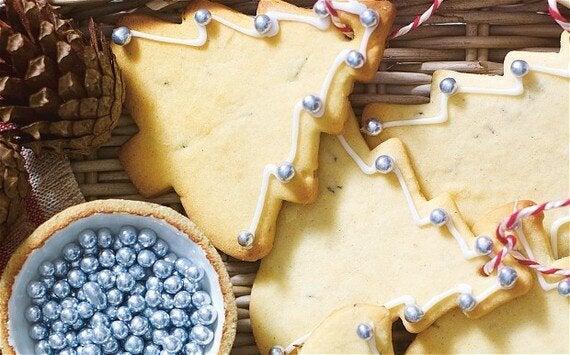
Douglas Fir Scented Christmas Trees
Flagging up Norwegian Christmas tree miles may not impress those who care about Planet Earth but I want to focus on a simple festive pleasure, a walk into an evergreen wood. Telling pines, firs, and spruces apart is all about I.D. and you can learn to do this with a little practice. Granted it can be hard work because evergreen branches are often out of reach, which makes needle study, hard work. Looking down at the fallen cones is perhaps more useful for determining the species. For those who celebrate Christmas as the birth of Christ there is a natural a bond between faith and appreciation of the beauty of the countryside.Turning back into the wood, some evergreens are more scented than others and for my nose, it's a faker, the Douglas fir Pseudotsuga menziesii that captures the essence of Christmas.
It's a fast growing tree so this will appease those with an eco conscience. America in my opinion does Christmas rather splendidly, be it decorations, films or Nat King Cole in song, roasting chestnuts over an open fire. It's fitting therefore that the oldest Douglas fir in Britain was raised from a seed brought back from its native North America in 1826. This tree is in the grounds of Scone Palace, in Perthshire, Scotland. The cone of the Douglas tree is easy to spot. It is dark brown with distinctive bracts - legend tells a tale of mice that sought shelter in the Douglas fir and suggests that is a mouse tail that sticks out of the scales of the Douglas fir cone. The needles of this fake fir are flat and distributed around the twig - rub some in your hands and smell Christmas as you walk through the woods. If you gather a small quantity of needles, they can be used to add wild Christmas flavour to cocktails, custards, sugar and baking.
Scented Douglas Fir Biscuits (recipe taken from The Forager's Kitchen)
2tbsps dry Douglas fir needles
125g sifted icing sugar
200g butter, cut into small cubes
1 small egg yolk
300g plain flour, plus extra for rolling
Glacé icing and silver balls, to decorate (optional)
Preheat the oven to 375°F/190°C/gas 5.
Put the dry Douglas fir needles and any seeds with the icing sugar in a food processor. Cover with a tea towel (the dust seems to escape even when the lid is firmly on), and blend to chop the pine needles finely.
Add the butter and egg yolk to the food processor, and then enough flour to make dough. Wrap in cling film, and refrigerate for at least an hour before using.
Lightly dust a work surface with flour, and roll out the pine dough. Stamp out thin 3mm Christmas trees with a biscuit cutter, place on a non-stick baking tray, and bake for approximately 8-10 minutes (depending on thickness).
Check after 8 minutes -- the trees will brown very suddenly. Cool for 2-3 minutes, then use a spatula to transfer the trees to a wire rack.
To hang the cookies on a Christmas tree: use a skewer to make a small hole in the dough of the Christmas tree (to thread ribbon through) before baking. Decorate with glacé icing and silver balls if desired, or frame the trees with a small amount of icing, to highlight the natural speckles of the pine needles in the dough.